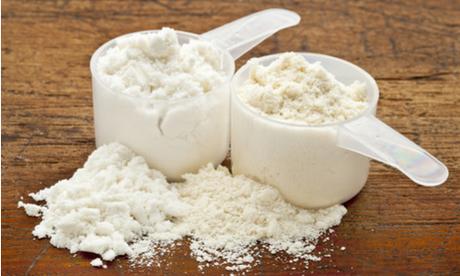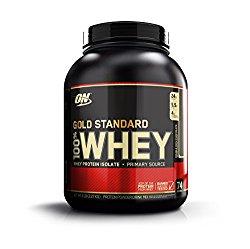
If you are into health supplements and resistance exercises, you might probably know about whey protein.
However, for starters, let’s start from scratch, and see what whey protein actually is, what its benefits are, and then we will have a look on the steps through which you can make your own whey protein at home.
What is Whey Protein?
Simply put, milk majorly consists of two proteins – whey (20%) and casein (80%). Whey protein is generally formed as a by-product of cheese.
You might have noticed a thin layer of liquid floating on the top, every time you open a yogurt container. This layer is nothing but whey protein.
As a matter of fact, whey protein is a complete protein in itself, as it is the perfect amalgamation of 9 essential amino acids. Further, whey protein also has low levels of lactose in it.
Related Article– Protein Powder 101 : Pros and Cons of different Proteins
Benefits of Whey Protein
Ranked #1 Whey Protein Brand!
As per a recent research, whey protein is highly effective in gaining muscles, enhancing strength and can also help you in losing body fat. (1)
Additionally, whey protein is also found helpful in treating blood sugar, depression and blood pressure. (2)
But that’s just not about whey protein. Here are a few other benefits of whey protein which are enough to convince you of its importance:
- Anti-cancer properties
As per a journal, whey protein is found to have anti-cancer properties and can be quite helpful in treating cancer. However, additional research is still going on. (3)
- Asthma
Whey protein can help in improving the conditions of people suffering from asthma, especially of children. A recent study conducted on 11 children showed that asthmatic children were supplemented with 10gm of why protein twice daily for a month, and the results showed immense improvement. (4)
- Helps in losing weight
Whey protein helps in losing weight, and this is perhaps one of the reasons why whey is consumed so popularly. A study conducted on 158 people revealed that people who consumed whey lost more body fat and were able to preserve their lean muscles more effectively. (5)
- Muscle training
The right combination of resistance exercises and whey protein can help you in building muscles. A recent study revealed that whey protein, when supplemented with the right resistance training, is more effective when compared to undertaking resistance training alone. (6)
Thus, we are sure, by now you might already have an idea as to how important whey protein can be in your fitness regime.
Let’s now move onto the next part of this article and see how you can make your own whey protein at home.
Step By Step Procedure of How to Make Whey Protein at Home
Step 1. As we already discussed that whey protein can be easily extracted from milk and its products. Thus, start the process by choosing a milk product you would like to extract the whey protein from. You can choose between cottage cheese, buttermilk, and yogurt.
Step 2. Next, take a bowl and place a small strainer over it.
Step 3. Over the strainer, place a muslin cloth and place your milk product over it. In this case, we are using curd, and have placed 250gm of curd over the strainer on the muslin cloth.
Step 4. Next, cover it with a plastic wrap and let it rest in the refrigerator for 8-10 hours.
Step 5. Take the bowl out of the refrigerator – the product that is left on the top of the strainer is curd cheese, while the whey protein collects itself in the bowl.
How Long Can Homemade Whey Protein Last?
It is always recommended to store whey protein in airtight glass jars. Further, refrigerated whey protein can be kept safe till 6 months!
Over to You
This brings us to the end of this article. Follow the above-mentioned procedure and make your own whey protein at home.
Further, homemade whey protein is pure and free from any additives.
So, what are your views on this? Do you have any queries? Write to us in the comments below!

